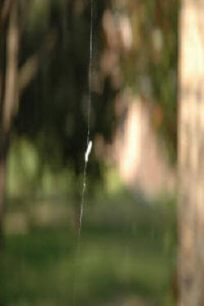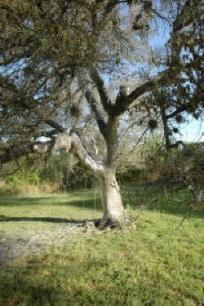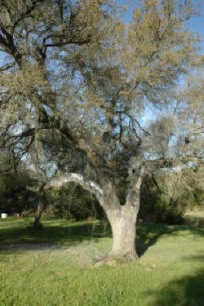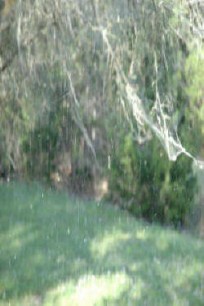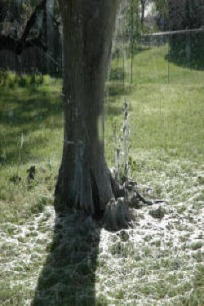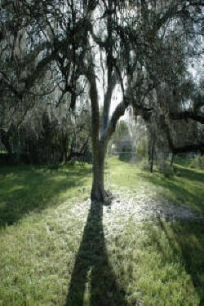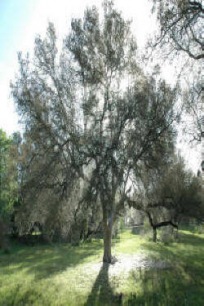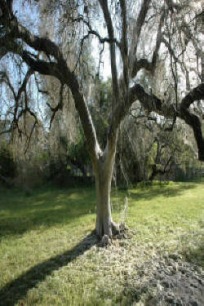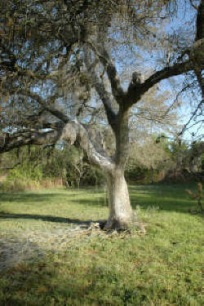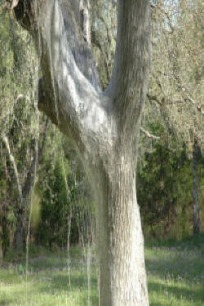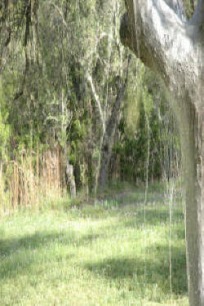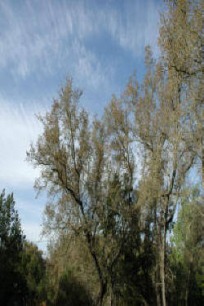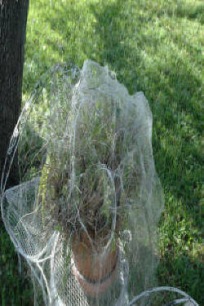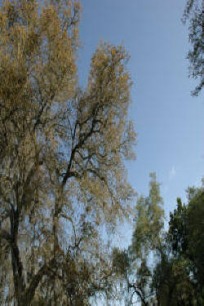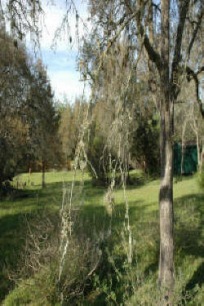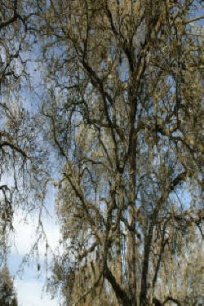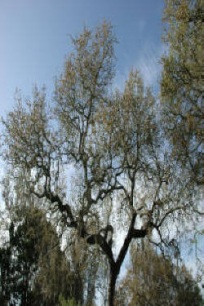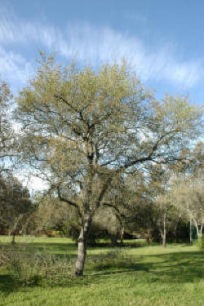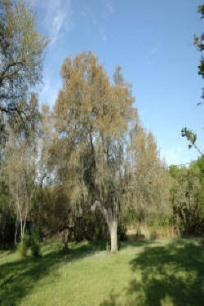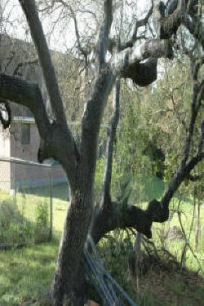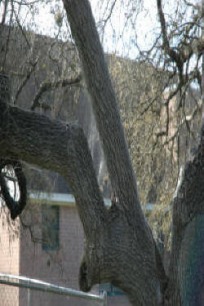In the early spring there are caterpillars that can completely defoliate trees. These worms feed on the new growth in early spring and will eat all the new leaves. The common name for these worms are Oak Leaf Rollers, or Loopers. These occur throughout Texas, but are most destructive in the Texas Hill Country and especially Austin. These worms spin thread which they use to hang from the leaves and branches, when dislodged or disturbed.
Damage
When a tree is defoliated during the growing season, it becomes stressed and serious damage can occur. Green leaves manufacture sugar that is later converted to carbohydrates and are essential for a tree to grow and live. When a tree is defoliated, it stops producing sugar, which slows tree growth. Although deciduous trees (broad leafed trees that lose their leaves in the winter) can survive for short periods of time without foliage, this process uses up valuable stored energy that a tree would need for its natural defense mechanisms. These stressed trees are more susceptible to attack by various diseases and insects. Weakened trees are extremely susceptible to wood-boring insects such as longhorn beetles, flat-headed tree borers, shot-hole borers and many clear-winged tree borers. If a tree is completely defoliated year after year, especially under the drought conditions that are common across Texas, it will die.
Life Cycle
The adult moth of the Oak Leaf Roller is about 1/2 inch long, with wings that have brown and dark brown markings. This species undergoes one generation per year. In May the moths lay their eggs on twig tips and leaf buds, and the eggs remain there for about ten months and begin to hatch in mid March. Once they hatch, the caterpillars feed on tender new spring growth of the trees from Mid-March until late April. They are creamy white to greenish and have a dark black or brown head. Trees that are heavily infested will be defoliated by mid to late April, when the fully grown worms form the pupae stage on the tips of twigs, and on other adjacent plants. At about the first of May, moths begin to emerge from their cocoon and begin laying eggs on the twigs of Live Oaks, Hackberry, Pecan and Walnut trees. These eggs will remain dormant until the following March, thus completing the cycle.
Control
In residential situations trees may need protection from caterpillar outbreaks. Valuable landscape trees with a history of leaf roller infestation should be watched carefully from Late March to mid April. If heavy leaf feeding damage is observed, the tree should be sprayed with either a carbaryl product, or an insecticide containing Bacillus thuringiensis var. kurstaki. To minimize stress and to restore tree vigor, Oaks or other trees that have been severely defoliated in the past should be fed with a balanced fertilizer and watered regularly. Choose a fertilizer that has equal parts of the three major elements and apply it at a rate of one pound of nitrogen (N) per diameter inch at waist height. This pesticide application is best left to a professional.
* Please note: The Texas Two Step program does not require the spraying of any product into the air.


